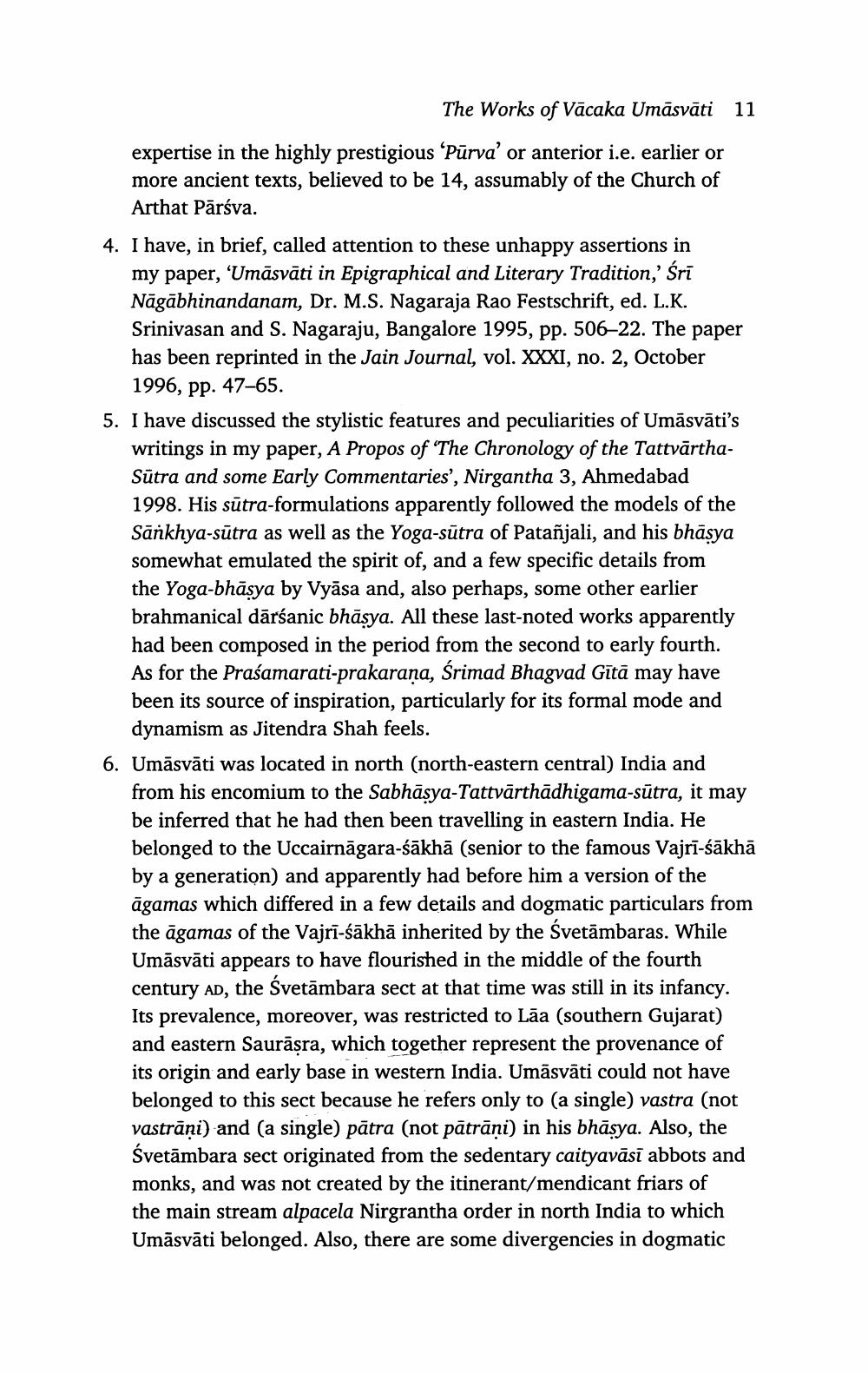________________
The Works of Vācaka Umāsvāti 11 expertise in the highly prestigious “Pūrva' or anterior i.e. earlier or more ancient texts, believed to be 14, assumably of the Church of
Arthat Pārsva. 4. I have, in brief, called attention to these unhappy assertions in
my paper, 'Umāsvāti in Epigraphical and Literary Tradition,' Sri Nāgābhinandanam, Dr. M.S. Nagaraja Rao Festschrift, ed. L.K. Srinivasan and S. Nagaraju, Bangalore 1995, pp. 506-22. The paper has been reprinted in the Jain Journal, vol. XXXI, no. 2, October
1996, pp. 47–65. 5. I have discussed the stylistic features and peculiarities of Umāsvāti's
writings in my paper, A Propos of 'The Chronology of the TattvārthaSūtra and some Early Commentaries', Nirgantha 3, Ahmedabad 1998. His sūtra-formulations apparently followed the models of the Sankhya-sūtra as well as the Yoga-sūtra of Patañjali, and his bhāsya somewhat emulated the spirit of, and a few specific details from the Yoga-bhāsya by Vyāsa and, also perhaps, some other earlier brahmanical dārśanic bhāsya. All these last-noted works apparently had been composed in the period from the second to early fourth. As for the Praśamarati-prakarana, Srimad Bhagvad Gītā may have been its source of inspiration, particularly for its formal mode and
dynamism as Jitendra Shah feels. 6. Umāsvāti was located in north (north-eastern central) India and
from his encomium to the Sabhāsya-Tattvārthādhigama-sūtra, it may be inferred that he had then been travelling in eastern India. He belonged to the Uccairnāgara-śākhā (senior to the famous Vajrī-śākhā by a generation) and apparently had before him a version of the āgamas which differed in a few details and dogmatic particulars from the āgamas of the Vajrī-śākhā inherited by the Svetāmbaras. While Umāsvāti appears to have flourished in the middle of the fourth century AD, the Svetāmbara sect at that time was still in its infancy. Its prevalence, moreover, was restricted to Lāa (southern Gujarat) and eastern Saurāșra, which together represent the provenance of its origin and early base in western India. Umāsvāti could not have belonged to this sect because he refers only to (a single) vastra (not vastrāni) and (a single) pātra (not pātrāni) in his bhāsya. Also, the Svetāmbara sect originated from the sedentary caityavāsī abbots and monks, and was not created by the itinerant/mendicant friars of the main stream alpacela Nirgrantha order in north India to which Umāsvāti belonged. Also, there are some divergencies in dogmatic




